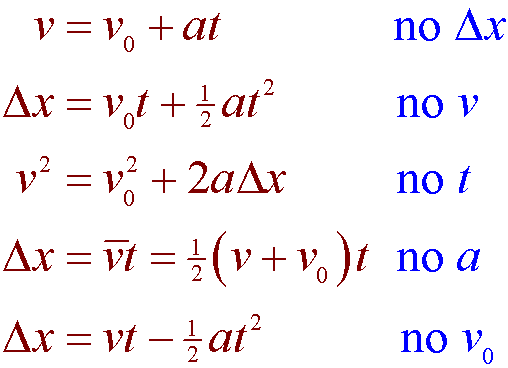Casual Mcat Kinematics Equations

MCAT Physics Equation Sheet Weve helped over 50000 students get better grades since 1999.
Mcat kinematics equations. The topics of translational motion and kinematics are perhaps the most important concepts to master for the MCAT. Log in Sign up. The correct answer is B.
D vi 12at2. Learn vocabulary terms and more with flashcards games and other study tools. You have to understand the units when to use which equation and be VERY comfortable applying these concepts to the more advanced Physics.
Kinematic equations are the foundation to mastering MCAT physics. The concepts learned here will serve as the foundation for many of the more advanced physics topics and the equations worked out here will come back again and again as the core units for more advanced calculations. Answer key for MCAT Physics Equations practice questions.
Because velocity is the antiderivative of acceleration that means that v t a t and v t int a t. We can use this knowledge and our knowledge of integrals to derive the kinematics equations. Yes you have to memorize and know the standard formulas but it goes deeper than that.
But as an enzyme will take part in this reaction we end up with a two-step reaction ES - ES - E P becomes E S - ES and ES - E P. LINEAR MOTION In linear motion the objects velocity and acceleration are along the line of motion so the pathway of the moving object continues along a straight line. The MCAT Medical College Admission Test is offered by the AAMC and is a required exam for admission to medical schools in the USA and Canada.
You have to understand the units when to use which equation and be VERY comfortable applying these concepts to the more advanced Physics topics on the MCAT. Kinematic equation without initial velocity. Kinematics no final velocity x v0t at22 x displacement v0 initial velocity t time a acceleration.













